The 10th Shanghai Biennale ponders a post-industrial China
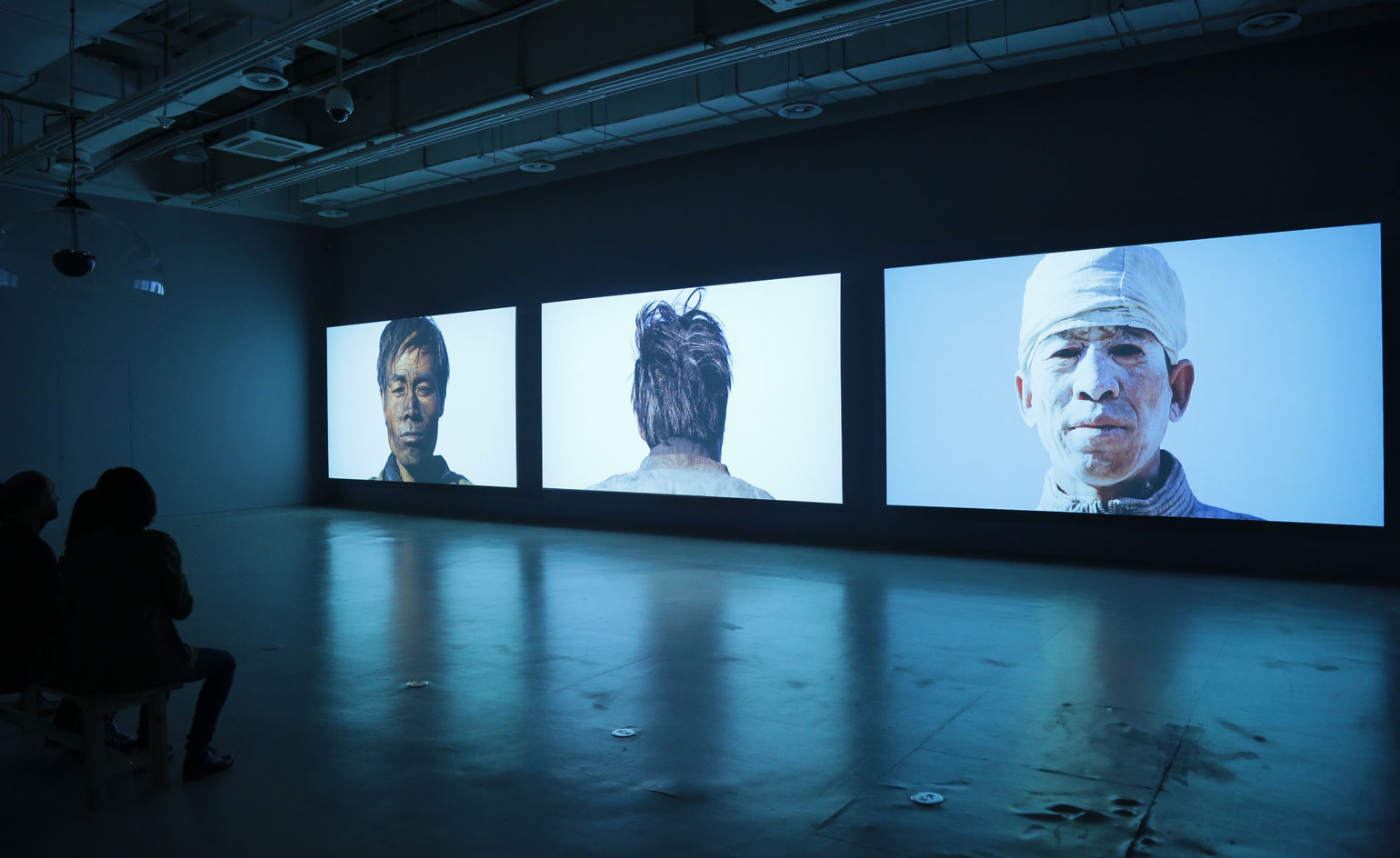
All eyes were on Shanghai this weekend as the 10th Shanghai Biennale opened at the Power Station of Art - a converted 40,000 sq m Blade Runner-esque industrial complex that serves as China’s first state-run contemporary art museum. Thanks to the curatorial vision of the young, forward-thinking Anselm Franke, who is based in Berlin, the exhibition was notable for standing out in a city awash with world-class art (notably Sean Scully’s current retrospective at the Himalayas Art Museum and the inaugural 'COSMOS' exhibition at the Minsheng Art Museum, both drawing large crowds).
'Few cities in the world represent the image of a society-in-the-making as dynamically as Shanghai,' says Franke, explaining this year's theme. ‘It characterises China’s rapid modernisation and yet also embodies a promise for the post-industrial future where China will no longer be the world factory but rather a “social factory”.’
Highlights among the 100 works by more than 70 local and international artists include Ming Wong’s musings on the future depicted through China’s wildly popular sci-fi television programmes and traditional Chinese opera; Hou Chun-Ming’s exploration of the role of fathers in Asia; and Californian artist Edgar Arceneaux’s immersive installation reflecting on post-industrial Detroit.
The diverse exhibition includes performances and films such as Wang Ziyue’s haunting record of a group living in China’s urban buildings awaiting demolition. Hu Liu also reflects on modern China with a work inspired by her 2002 recreation of the Long March Space where she exchanged red carnations with local peasants for artefacts, while Ran Huang’s monumental stone engraved by British artisans questions creativity within art.
The Chinese principle of ‘seek truth from facts’ famously invoked by Mao Zedong in 1938 is another key theme, reflected here in Austrian composer Peter Ablinger’s robotic piano installation playing a tune following the words. In the same lobby space, Liu Chuang’s ‘Segmented Landscape’ geometric window grilles comment on notions of inside and outside.
Trevor Yeung’s ‘Maracujá Road’ work is, however, the standout piece with a thought provoking representation of unsatisfied impulses in human relationships. The work is composed of a bamboo frame suspended out of reach of 80 highly invasive passion fruit plants: a striking metaphor of modern life.
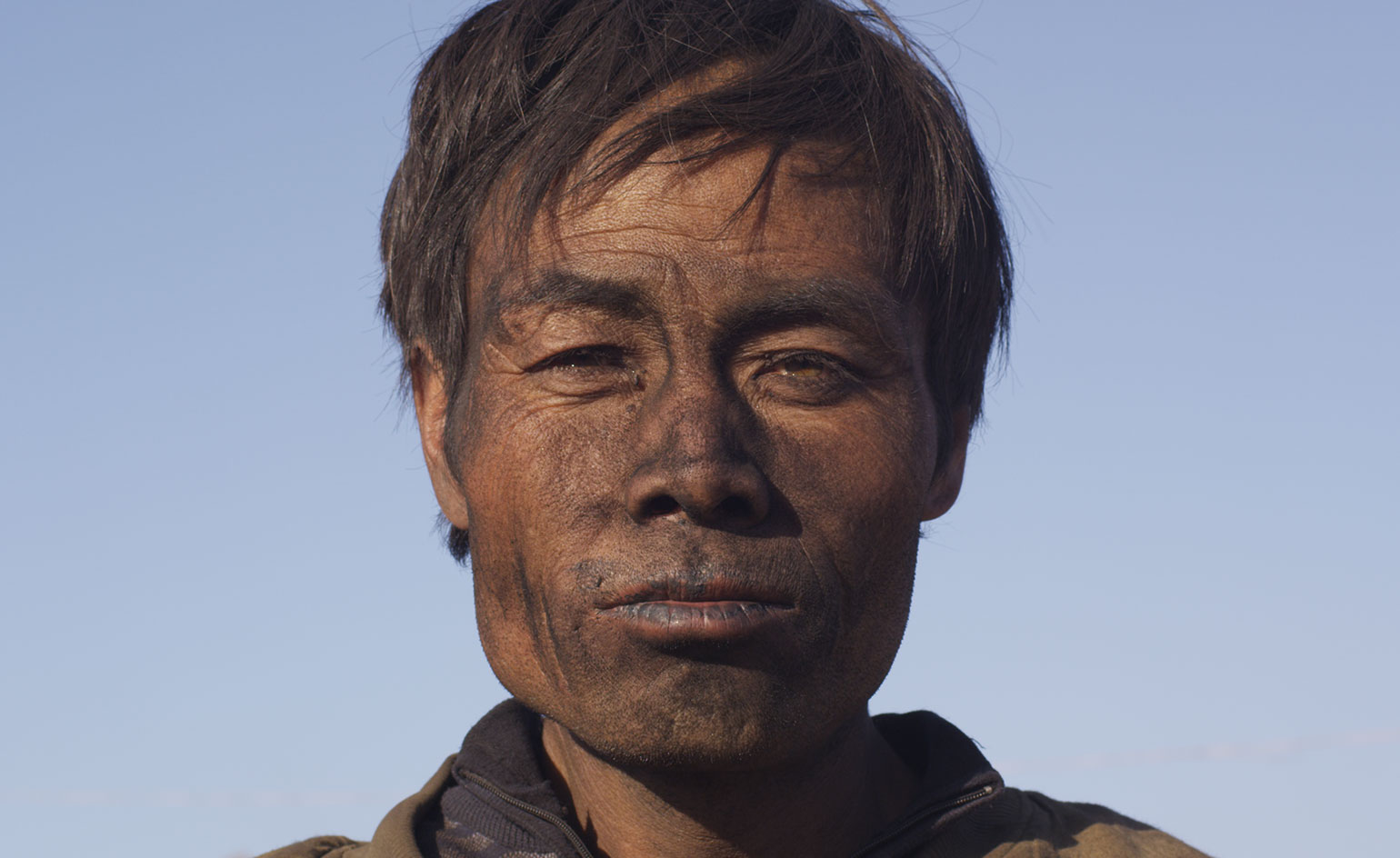
A still from 'Black Face, White Face', by Zhao Liang, 2014. Courtesy of the artist
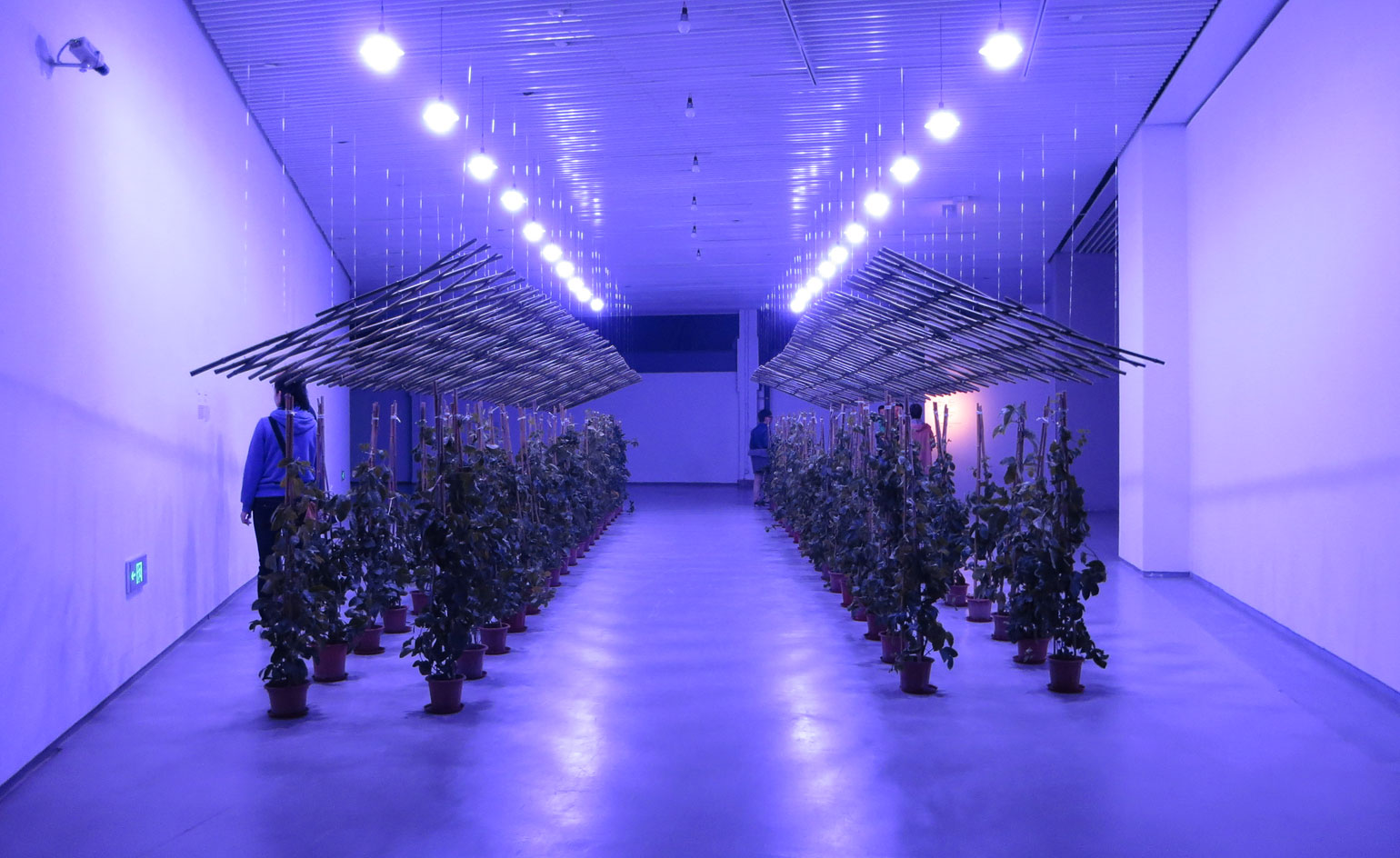
Trevor Yeung’s ‘Maracujá Road’ work is the standout piece with a thought provoking representation of unsatisfied impulses in human relationships. The work is composed of a bamboo frame suspended out of reach of 80 highly invasive passion fruit plants: a striking metaphor of modern life
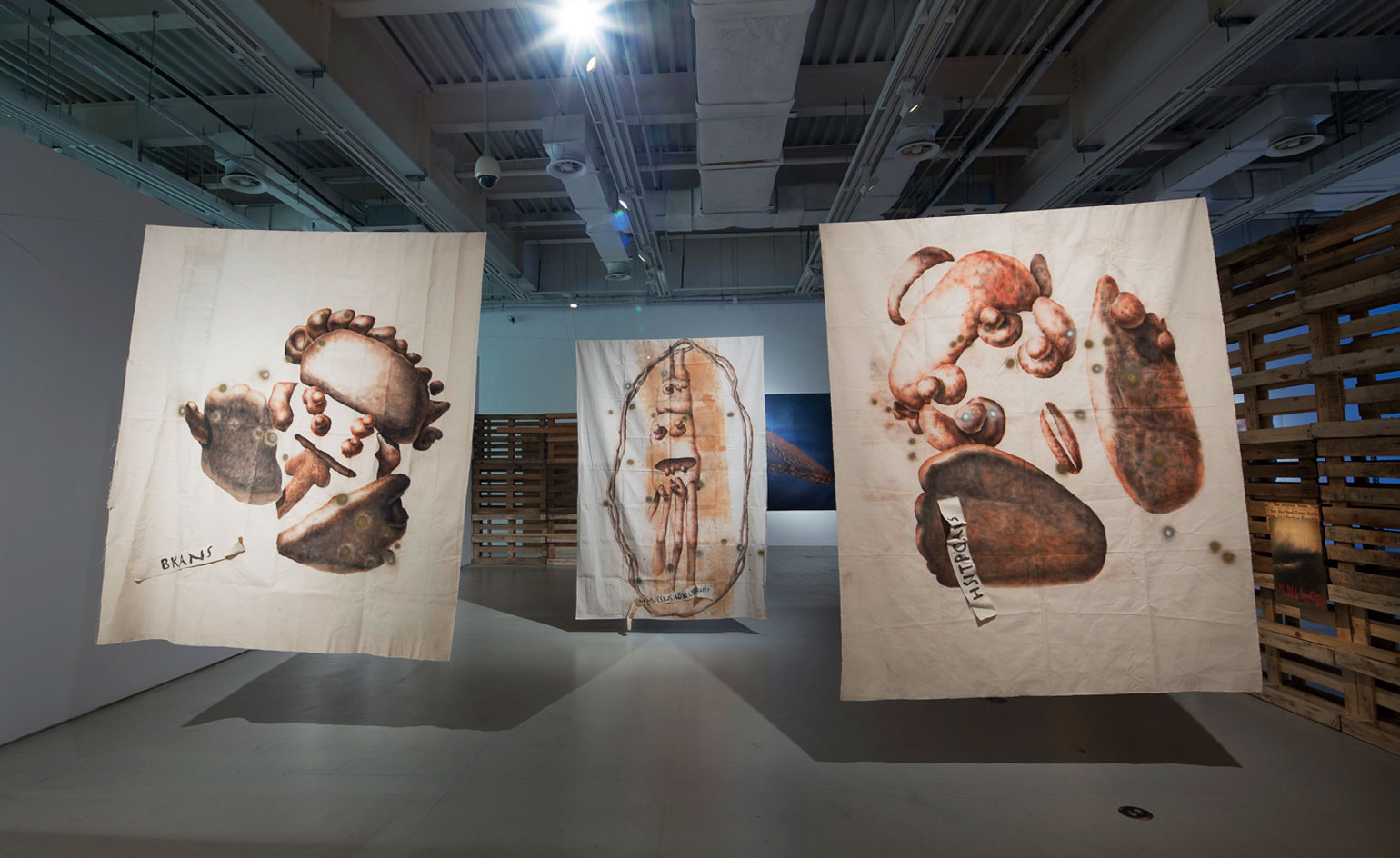
'The Algorithm Doesn't Love You: from Detroit to Shanghai', by Edgar Arceneaux, 2010-14. Courtesy of the artist and Susanne Vielmetter Los Angeles Projects
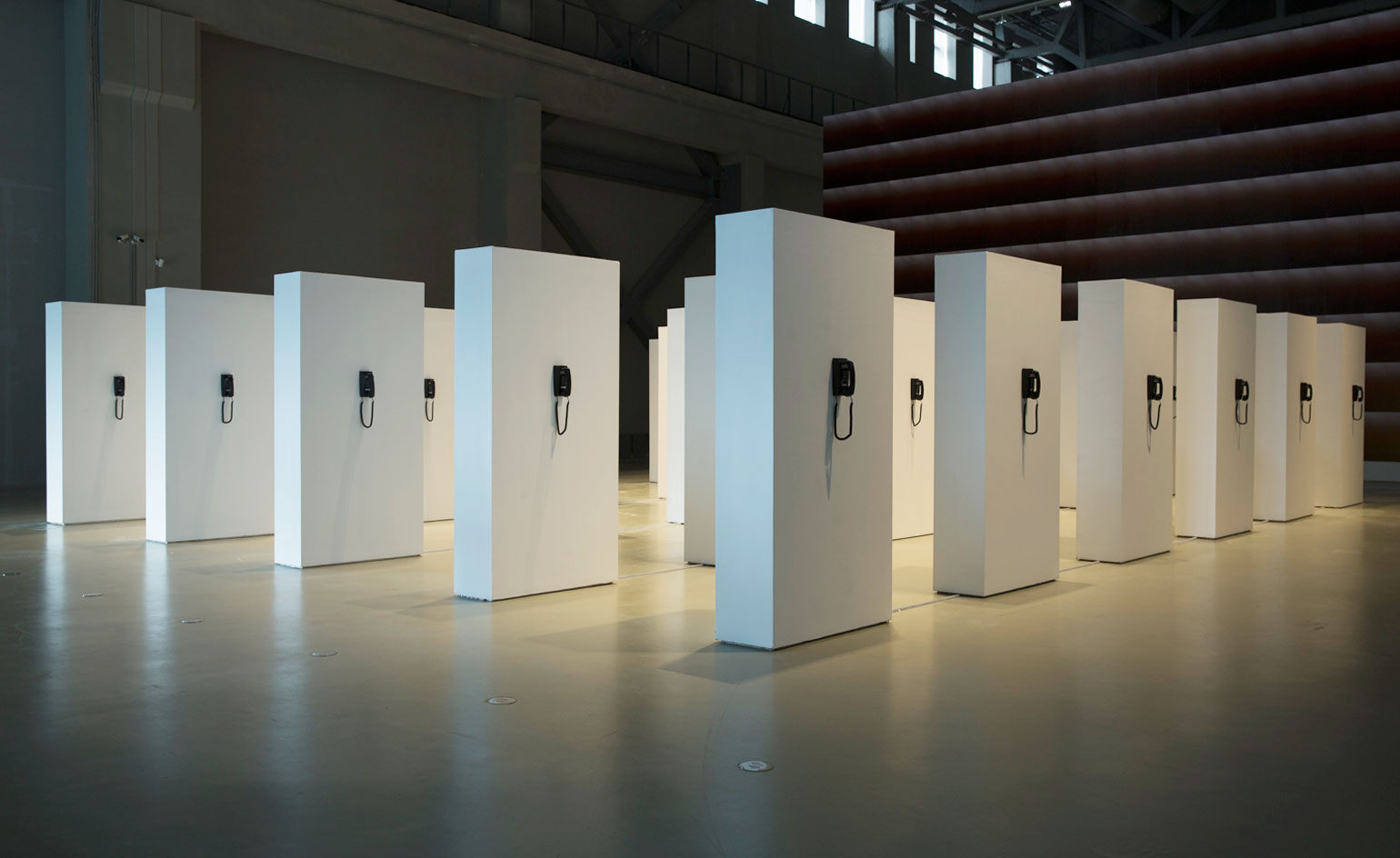
'1999' sound installation, by Liu Ding, 2014. Courtesy of the artist

'For the Sake of Ten Thousand - Old Hero', by Liu Ding, 2014. Courtesy of the artist
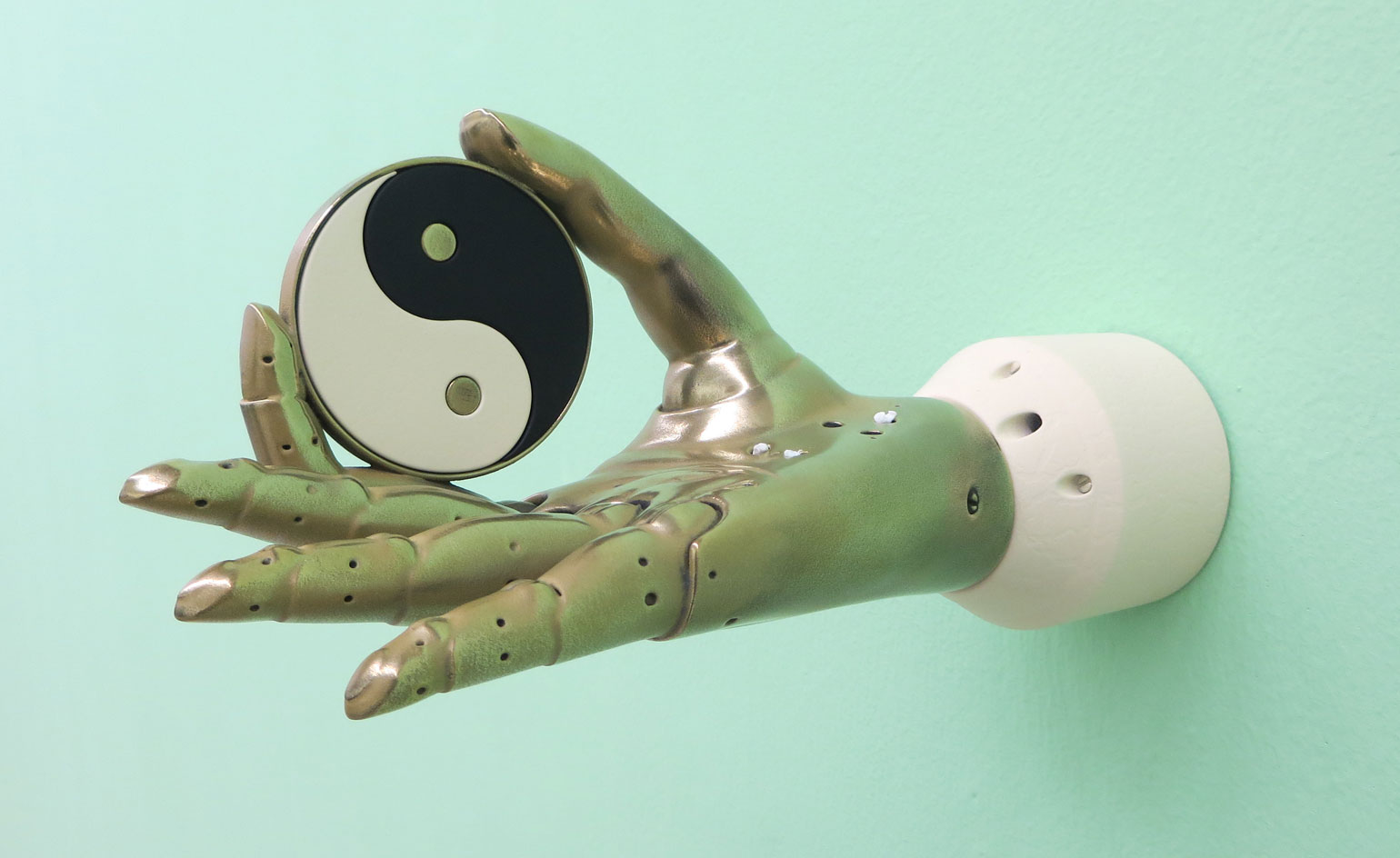
Alexandra Domanovic's 'From Yu To Me' series is part of the artist's enquiries into cybernetics and science. The 'Belgrade Hand', a multifunctional prosthesis developed in 1964, was the first prosthetic hand that had a sense of touch. The artwork also nods to Diego Rivera's 'A Dream of Sunday Afternoon in Alameda Park', a painting depicting Frida Kahlo holding a yin and yang symbol
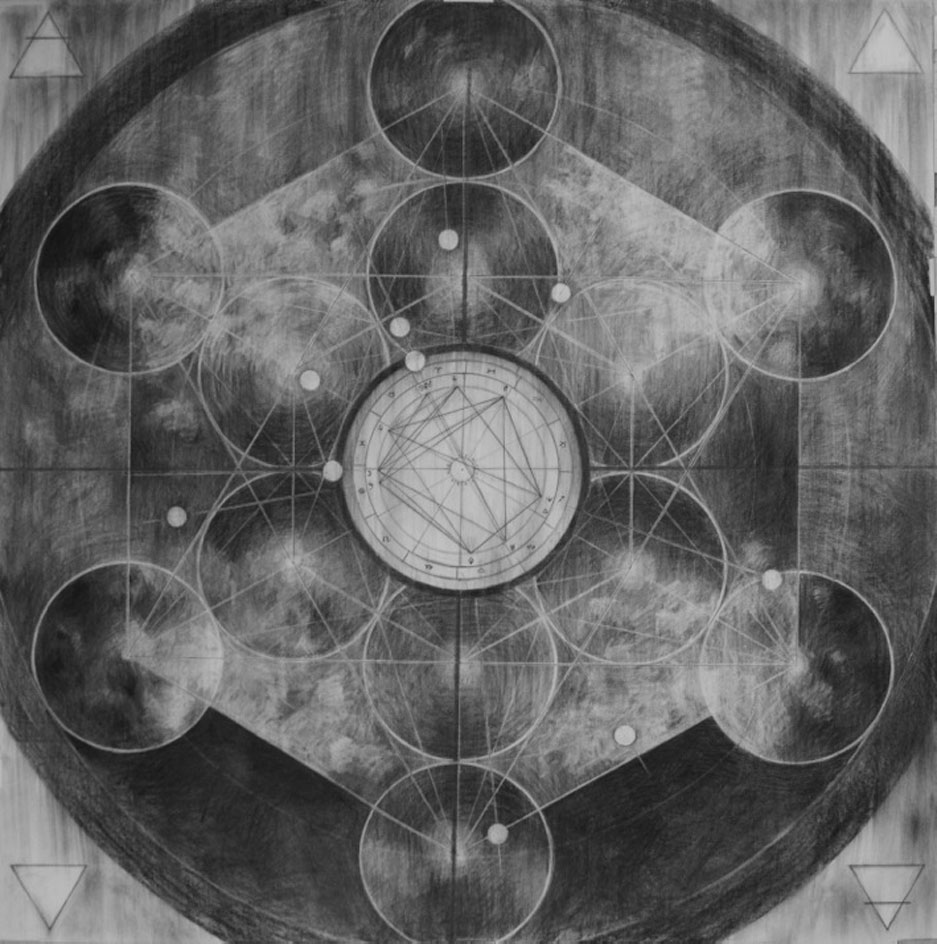
'Liquidation Maps - Khmer Rouge, Cambodia, 1975-78', by Yin-Ju Chen, 2014. This work explores political genocides and massacres in Asian history from an occult angle, blending astrology and astronomy. Courtesy of the artist
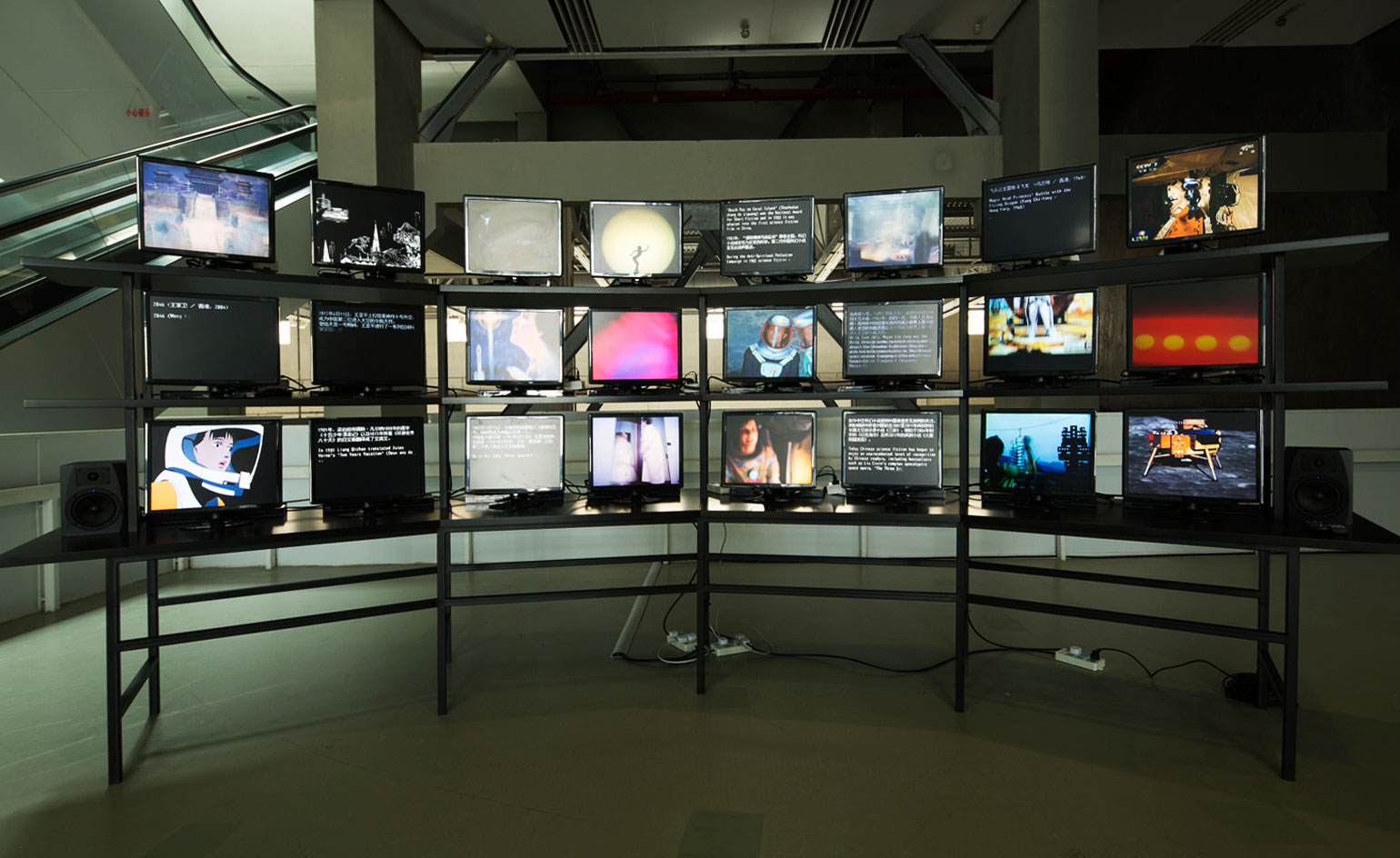
'Windows on the World (Part 2)', by Ming Wong, 2014. Here, the artist muses on the future depicted through China’s wildly popular sci-fi television programmes and traditional Chinese opera. Courtesy of the artist and Vitamin Creative Space
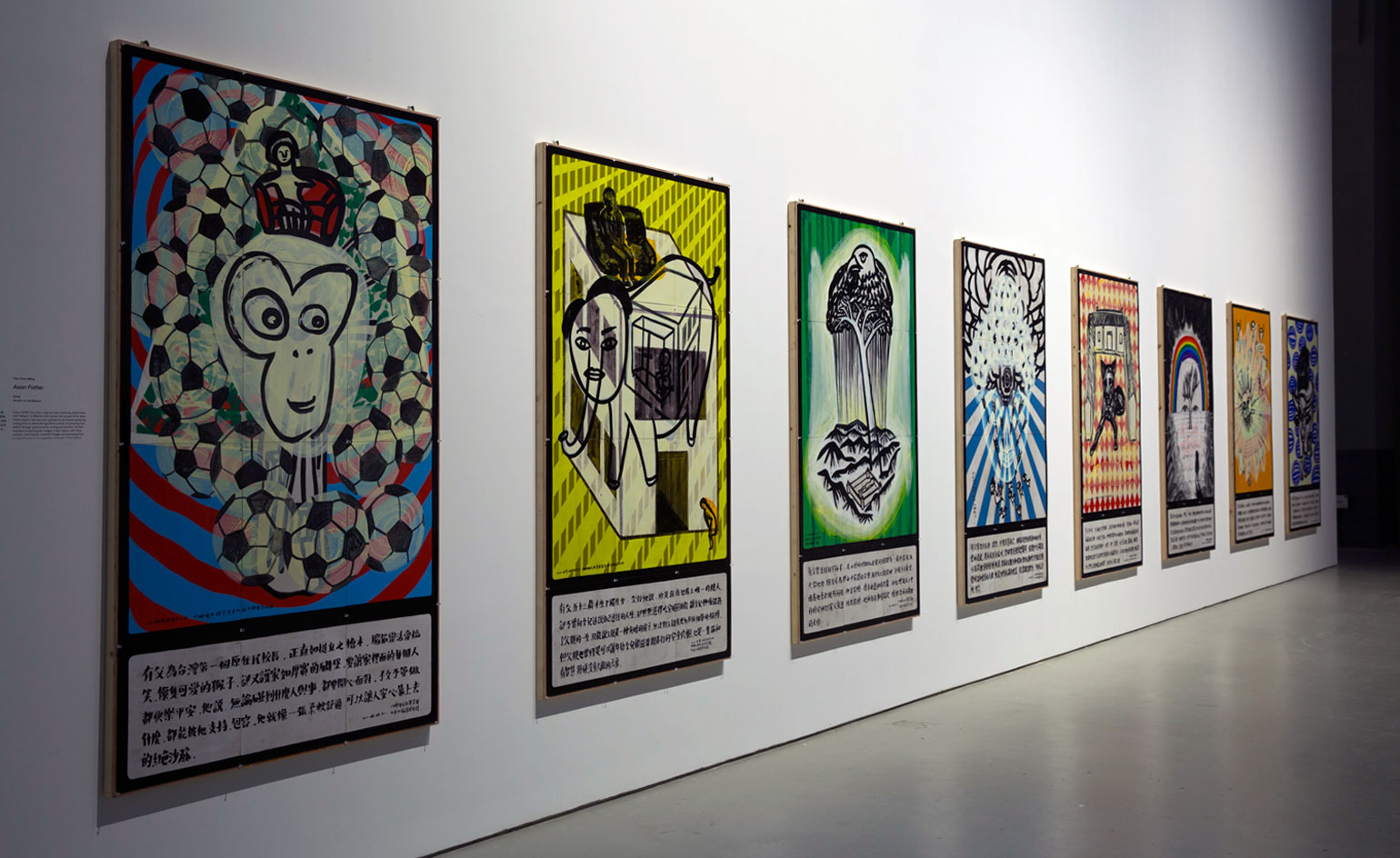
Hou Chun-Ming's 'Asian Father' series, 2014, explores paternal relationships. Courtesy of the artist
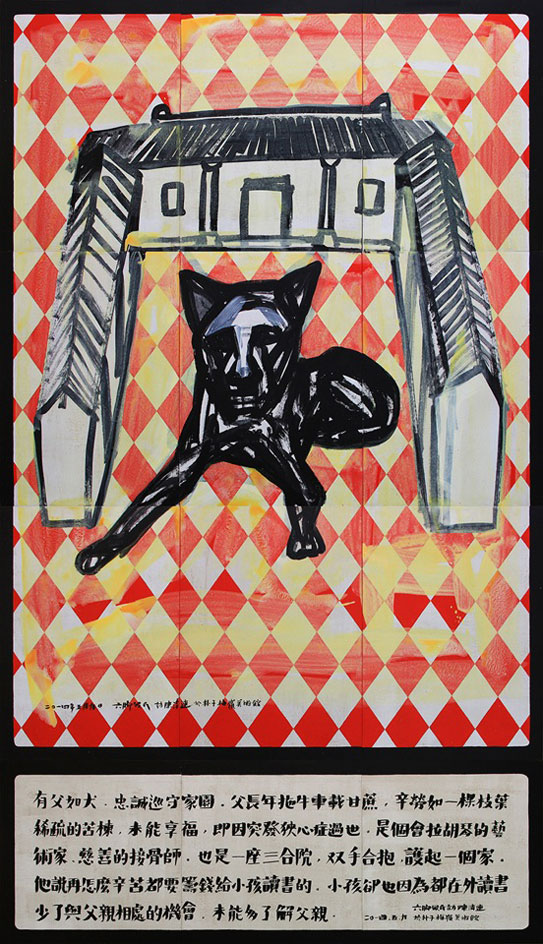
'Asian Father', by Hou Chun-Ming, 2014. Courtesy of the artist
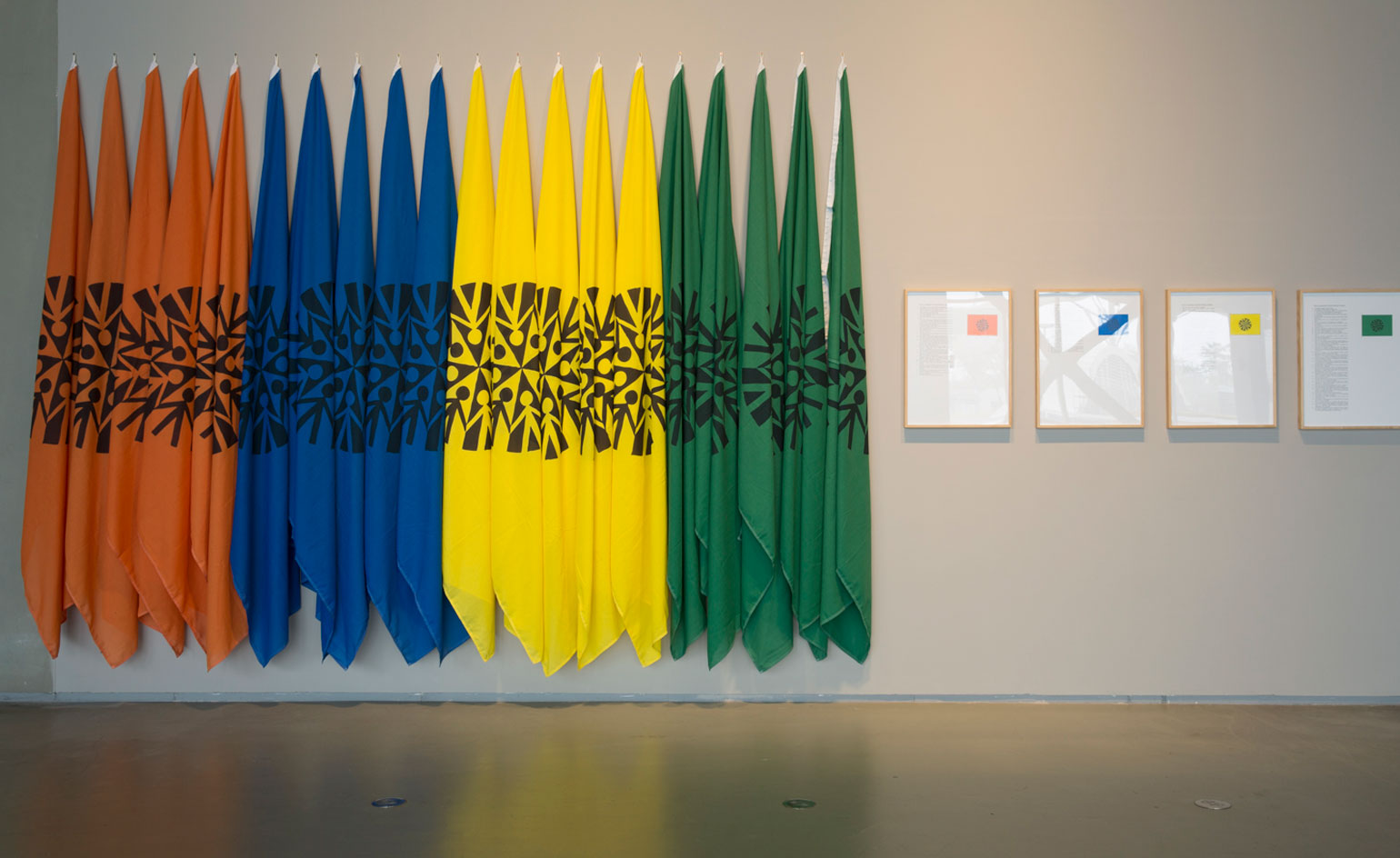
'Flags for Organizations', by Art & Language, 1978. Courtesy of the artists and Lisson Gallery, London
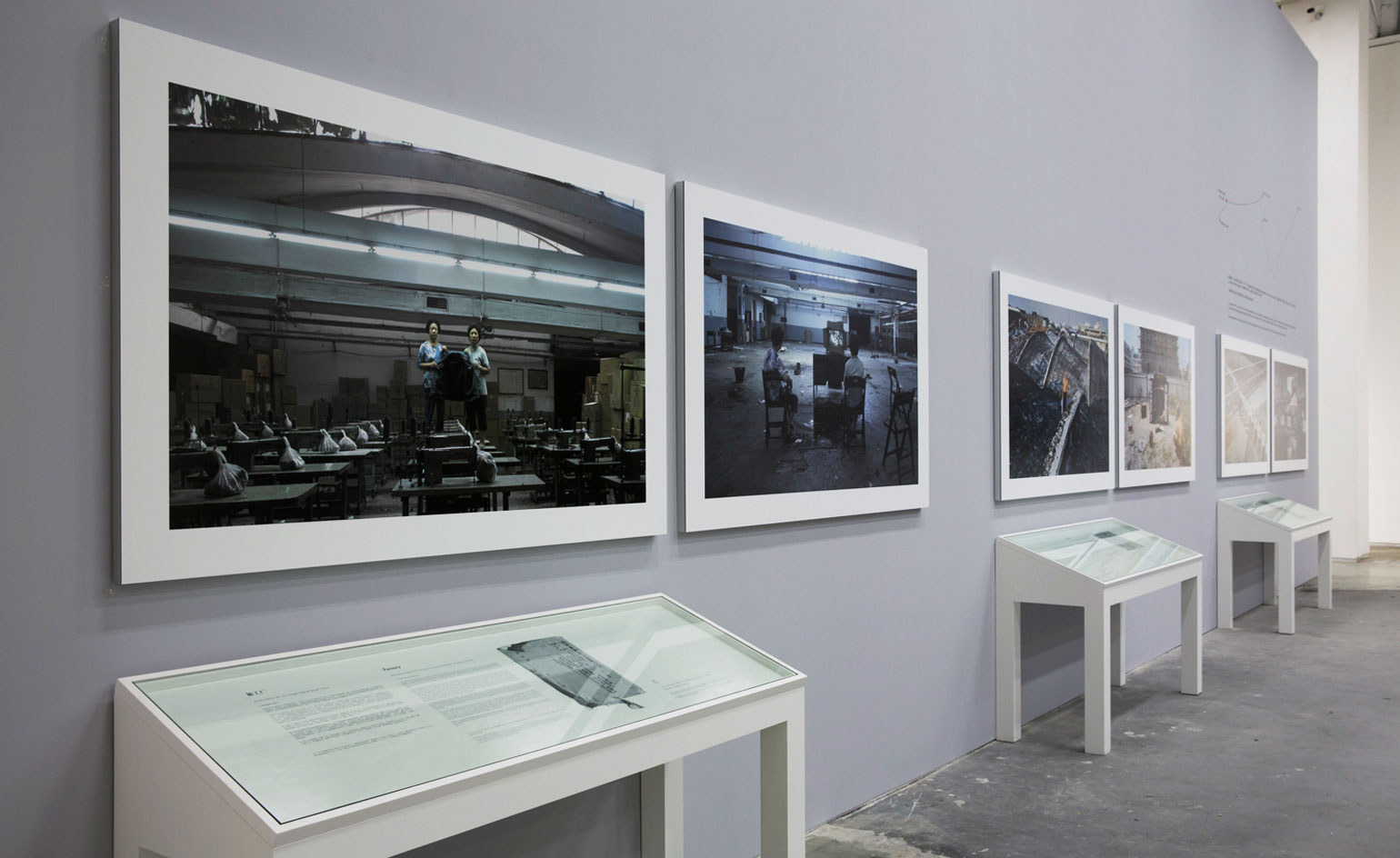
'Transformation Text (Book of Bianwen)', by Chen Chieh-jen, 2014
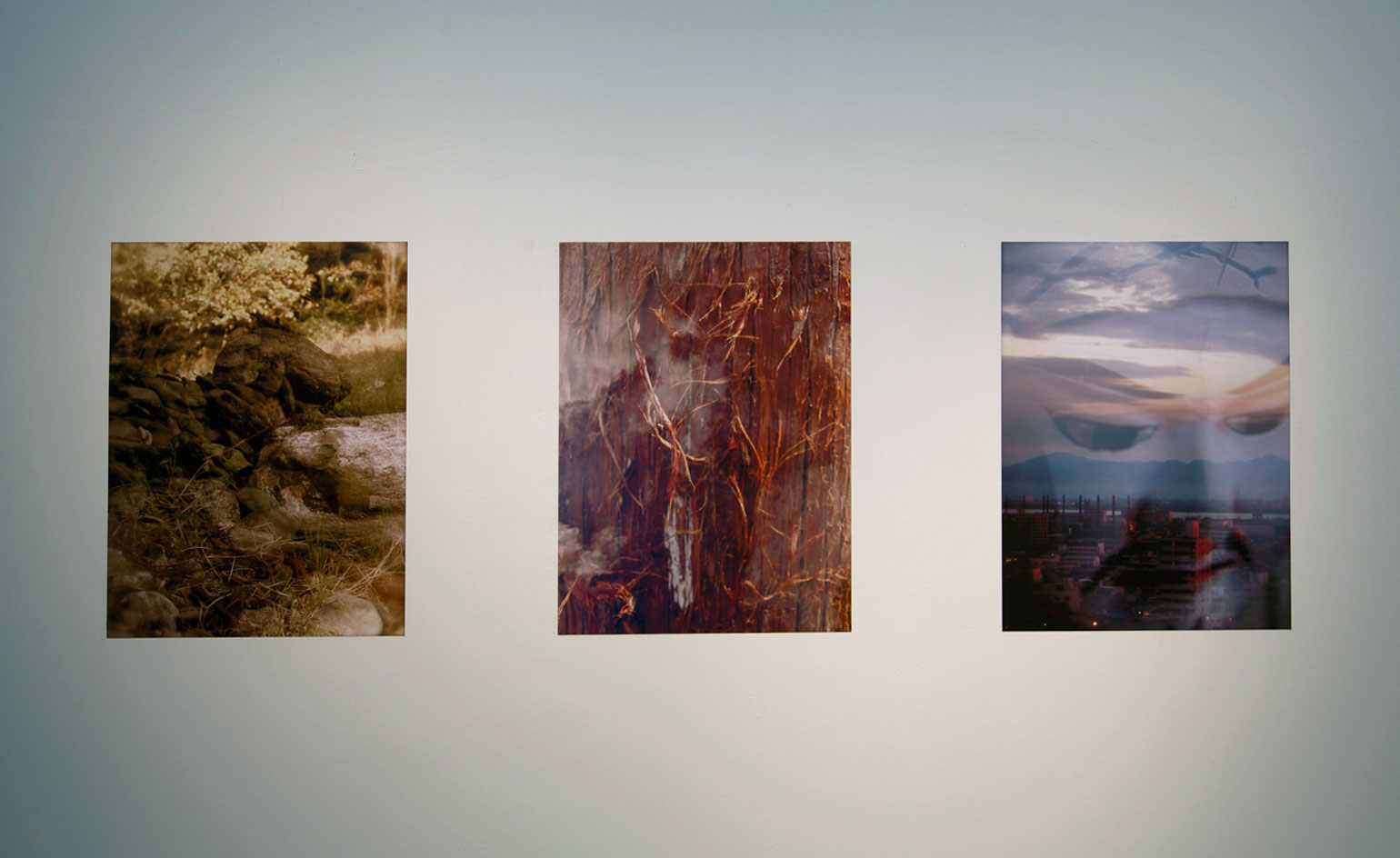
'Views from the Indigo Train', by Adam Avikainen, 2014
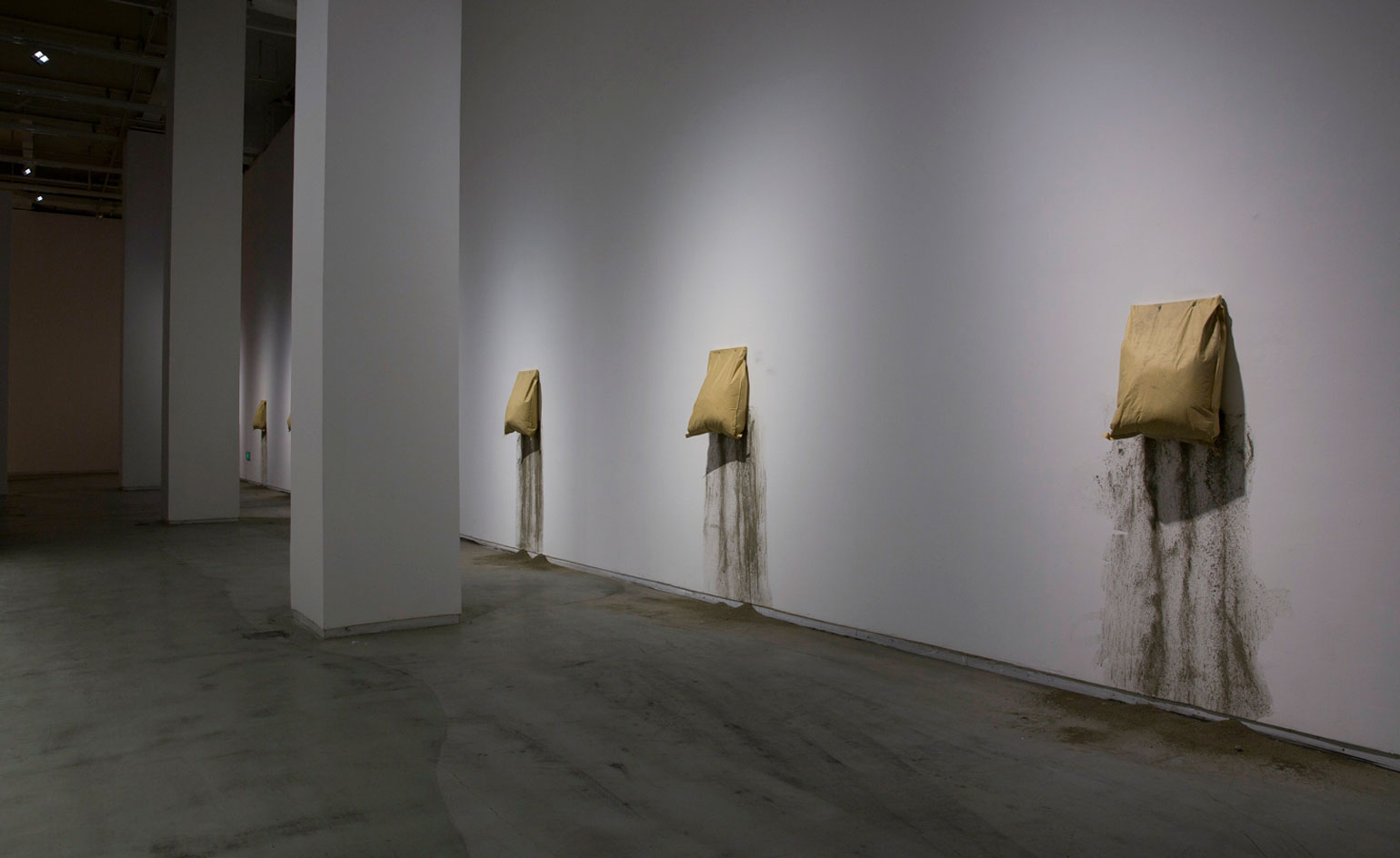
'Dust: Dust Square', by Mona Vatamanu and Florin Tudor, 2007-2014. Courtesy of the artists
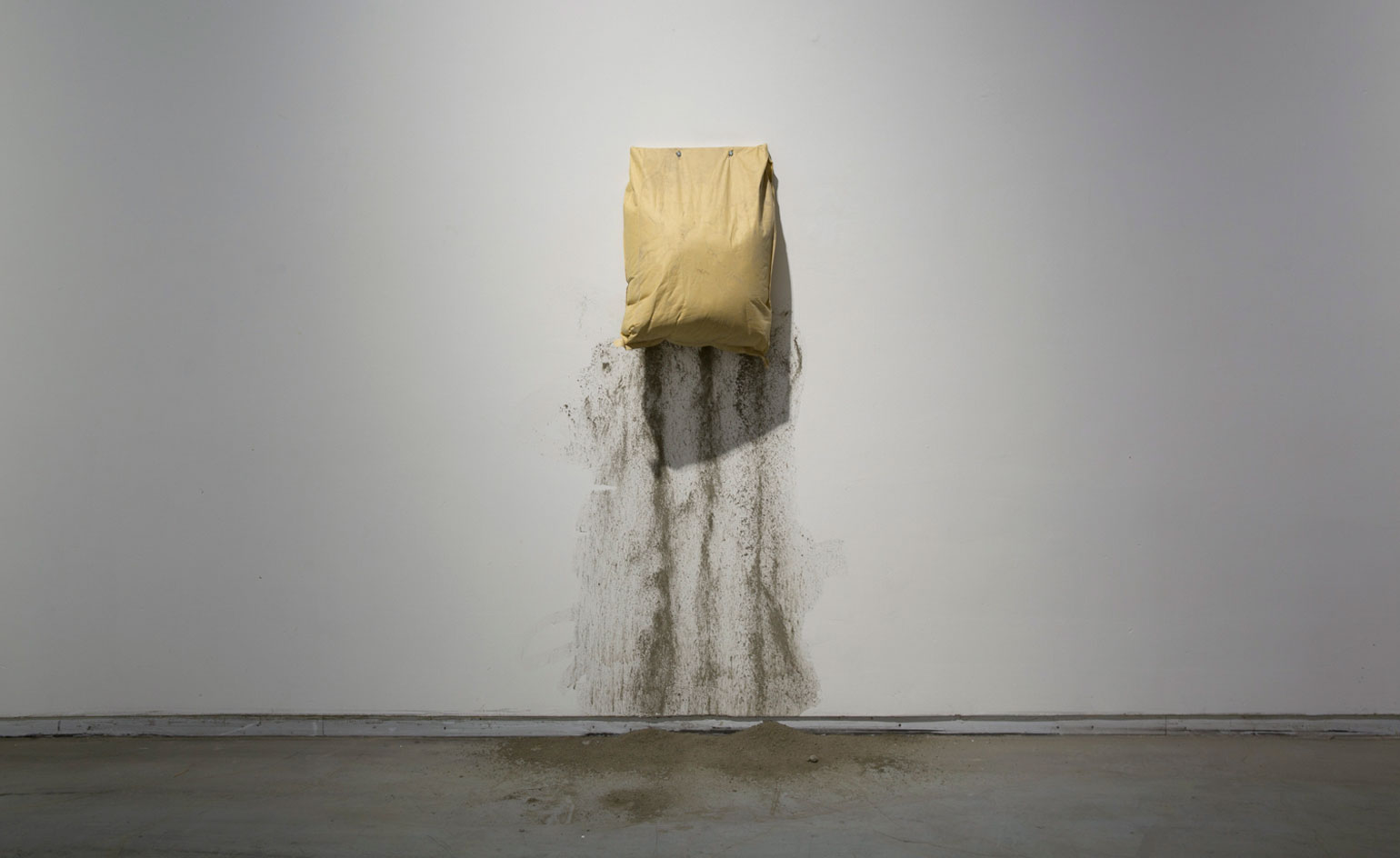
The Romanian artist duo's 'Dust: Dust Square' work traces ruins of buildings demolished by dictatorial regimes in Europe, here focusing on the Vacaresti monastery destroyed in 1986 in Bucharest. Courtesy of the artists
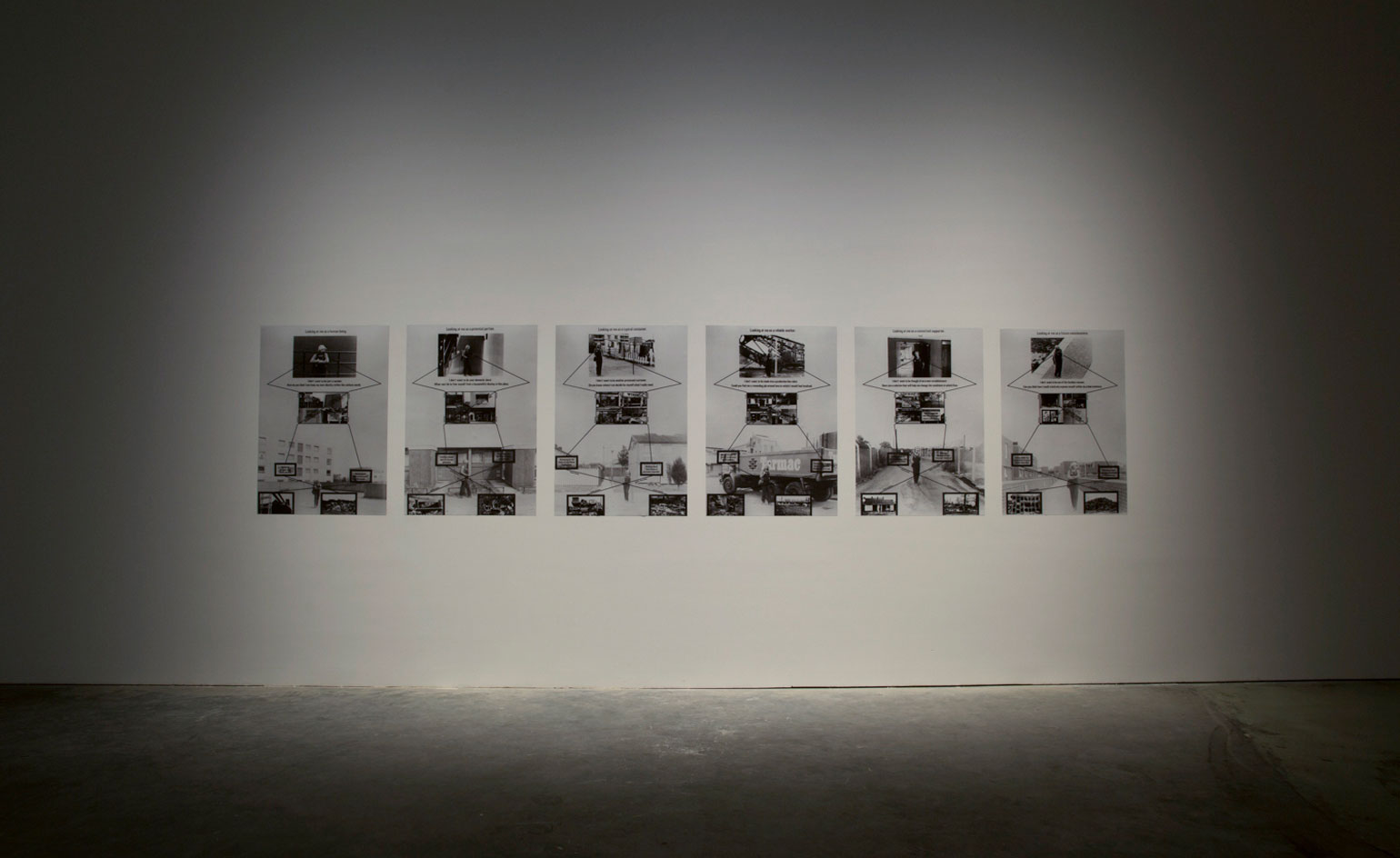
'I Don't Want to be Like Anyone Else', by Stephen Willats, 1977. Courtesy of the artist and Victoria Miro, London
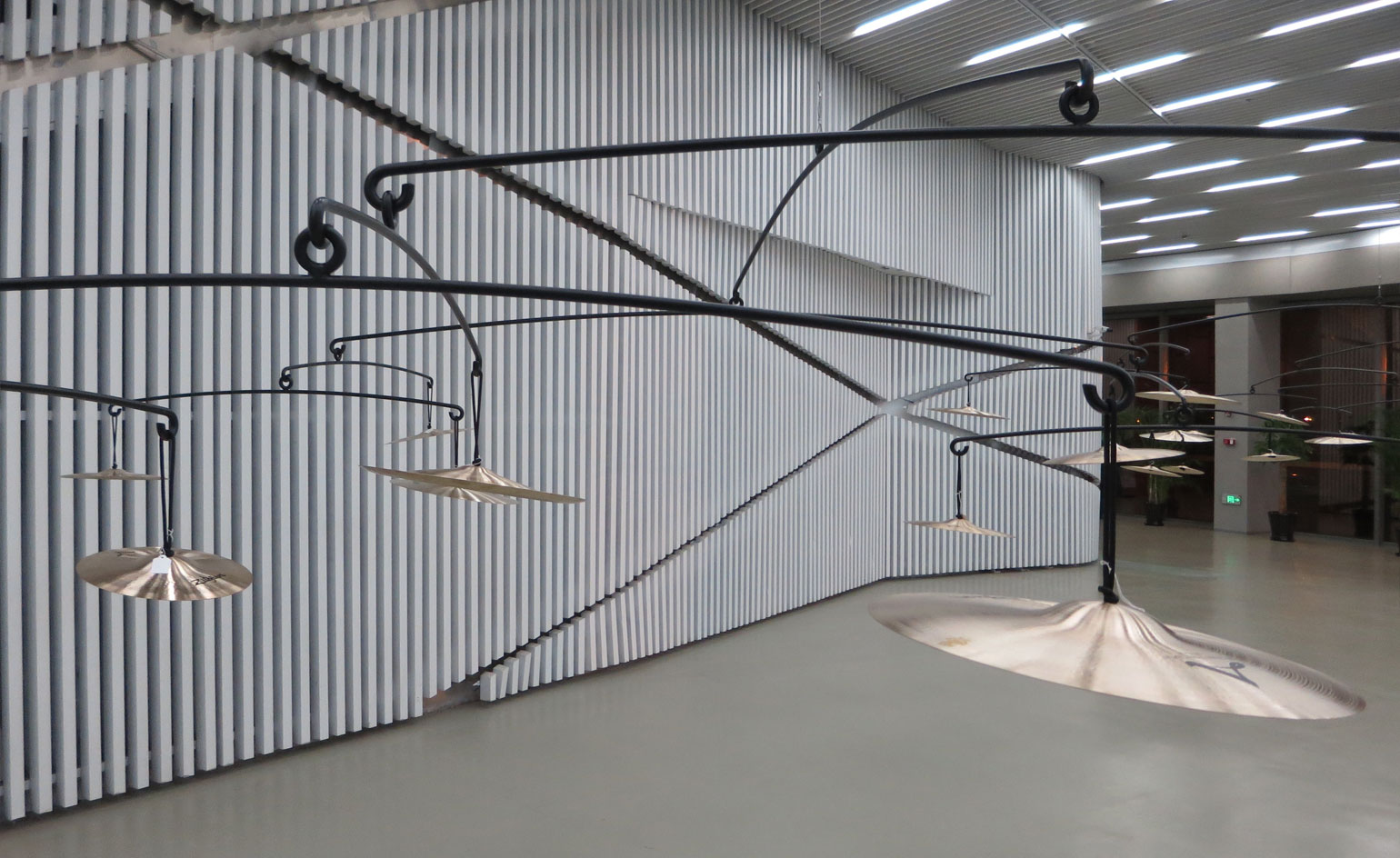
'We'll See How All Reverberates', by Carlos Amorales, is a musical installation based on the mobiles of Alexander Calder. Visitors are invited to play on the cymbals
ADDRESS
Power Station of Art
200 Huayuangang Road
Shanghai
China
Receive our daily digest of inspiration, escapism and design stories from around the world direct to your inbox.
Catherine Shaw is a writer, editor and consultant specialising in architecture and design. She has written and contributed to over ten books, including award-winning monographs on art collector and designer Alan Chan, and on architect William Lim's Asian design philosophy. She has also authored books on architect André Fu, on Turkish interior designer Zeynep Fadıllıoğlu, and on Beijing-based OPEN Architecture's most significant cultural projects across China.
-
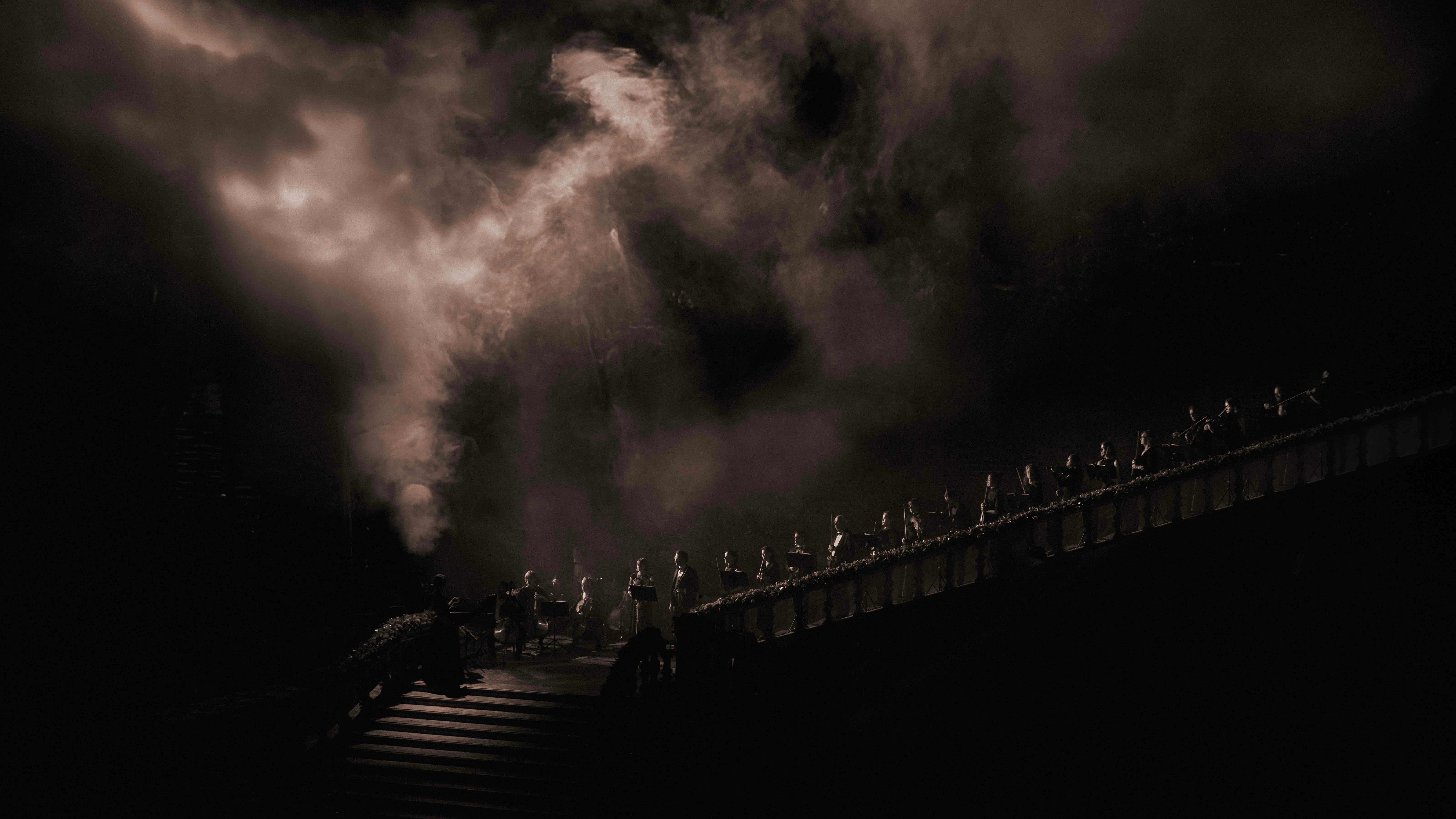 Alexander Wessely turns the Nobel Prize ceremony into a live artwork
Alexander Wessely turns the Nobel Prize ceremony into a live artworkFor the first time, the Nobel Prize banquet has been reimagined as a live artwork. Swedish-Greek artist and scenographer Alexander Wessely speaks to Wallpaper* about creating a three-act meditation on light inside Stockholm City Hall
-
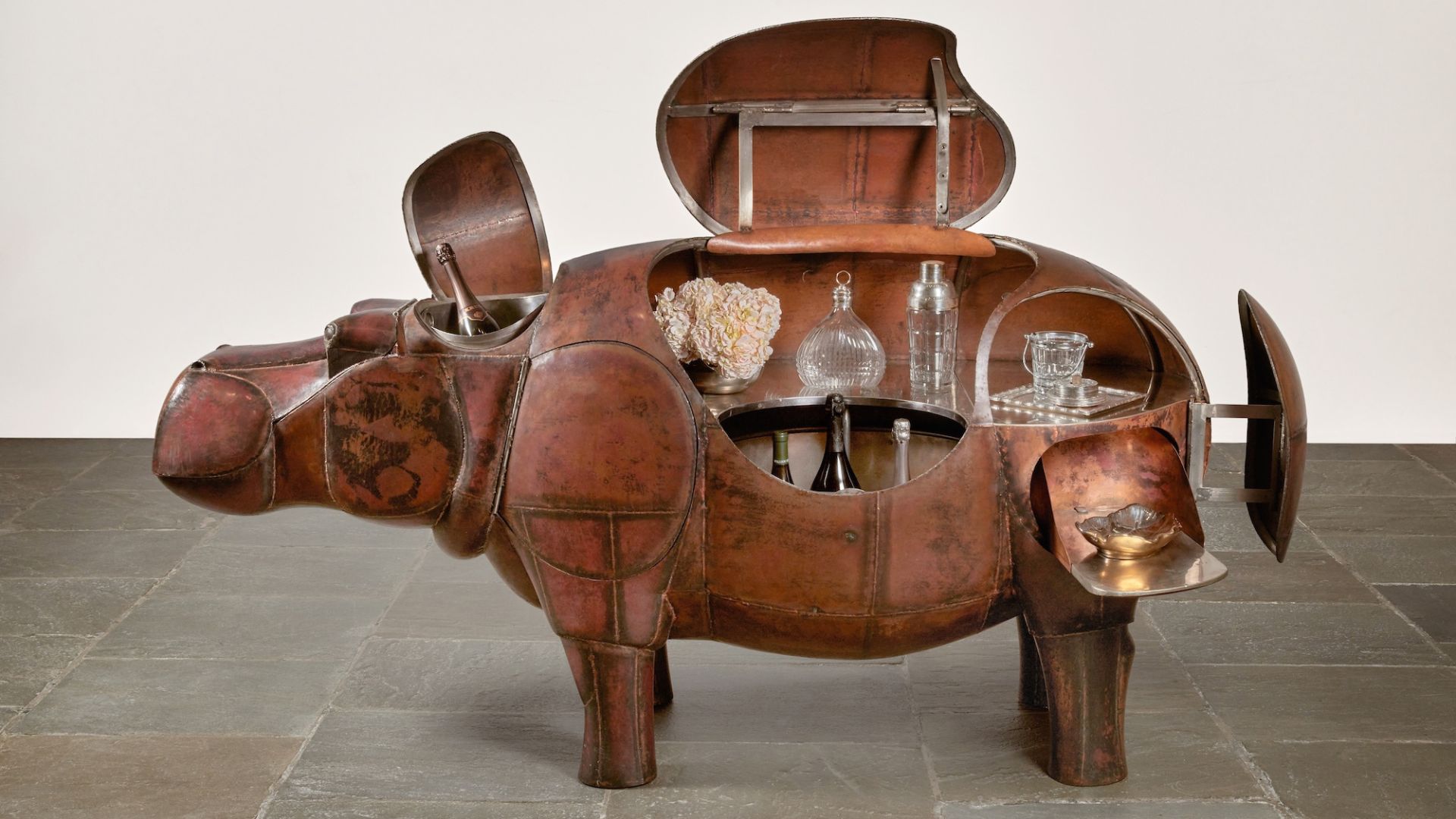 At $31.4 million, this Lalanne hippo just smashed another world auction record at Sotheby’s
At $31.4 million, this Lalanne hippo just smashed another world auction record at Sotheby’sThe jaw-dropping price marked the highest-ever for a work by François-Xavier Lalanne – and for a work of design generally
-
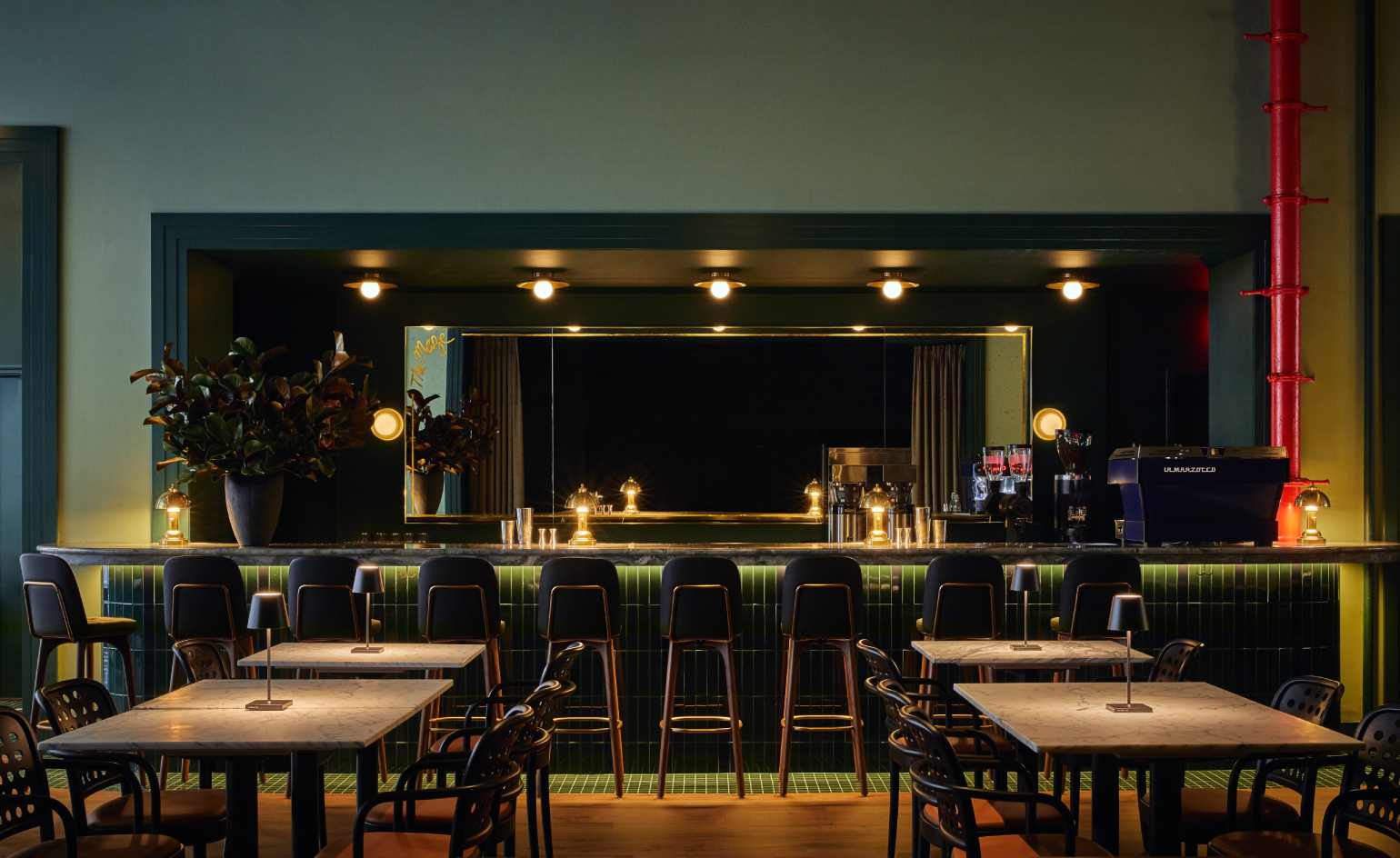 NYC’s first alcohol-free members’ club is full of spirit
NYC’s first alcohol-free members’ club is full of spiritThe Maze NYC is a design-led social hub in Flatiron, redefining how the city gathers with an alcohol-free, community-driven ethos
-
 What is RedNote? Inside the social media app drawing American users ahead of the US TikTok ban
What is RedNote? Inside the social media app drawing American users ahead of the US TikTok banDownloads of the Chinese-owned platform have spiked as US users look for an alternative to TikTok, which faces a ban on national security grounds. What is Rednote, and what are the implications of its ascent?
-
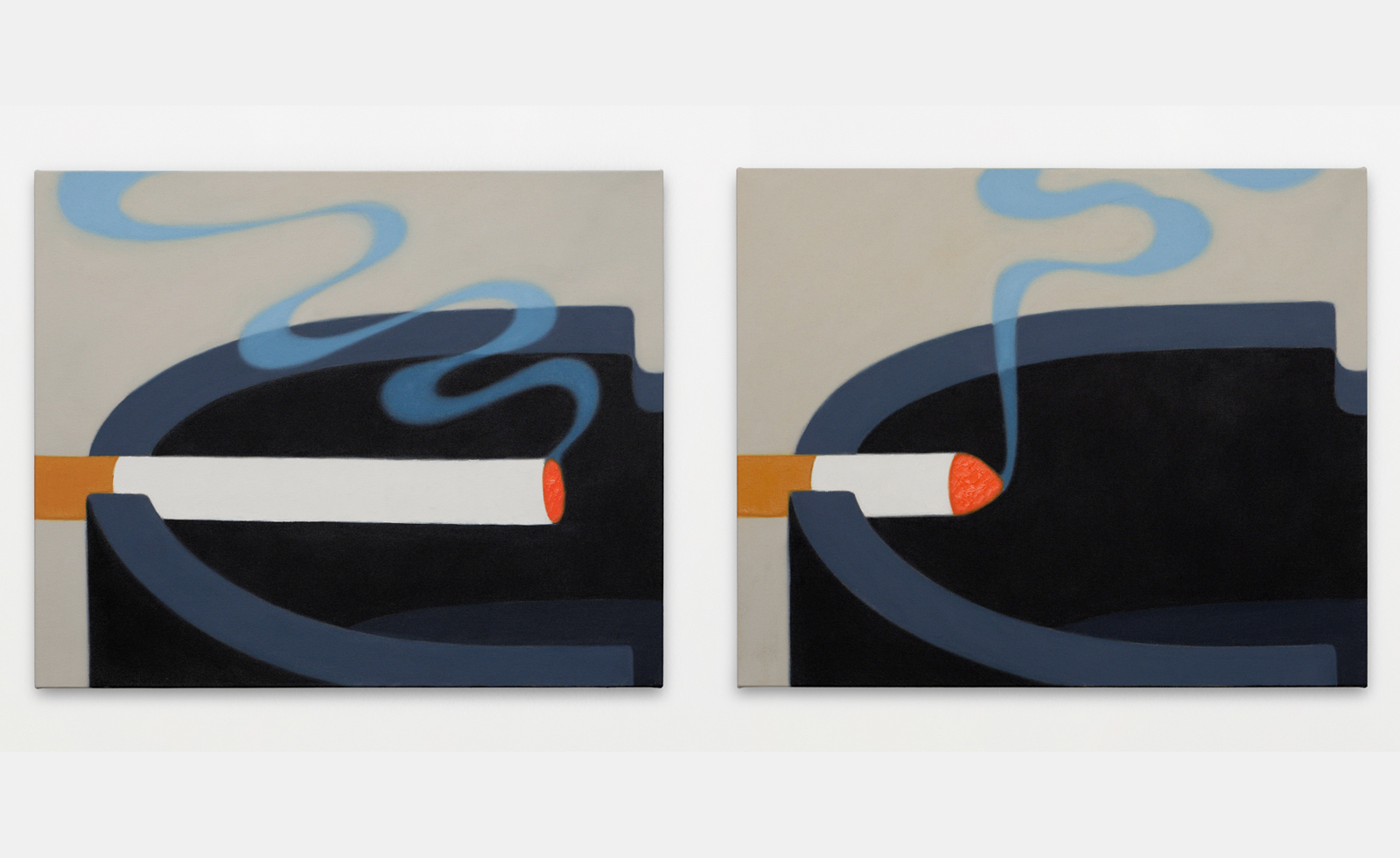 Henni Alftan’s paintings frame everyday moments in cinematic renditions
Henni Alftan’s paintings frame everyday moments in cinematic renditionsConcurrent exhibitions in New York and Shanghai celebrate the mesmerising mystery in Henni Alftan’s paintings
-
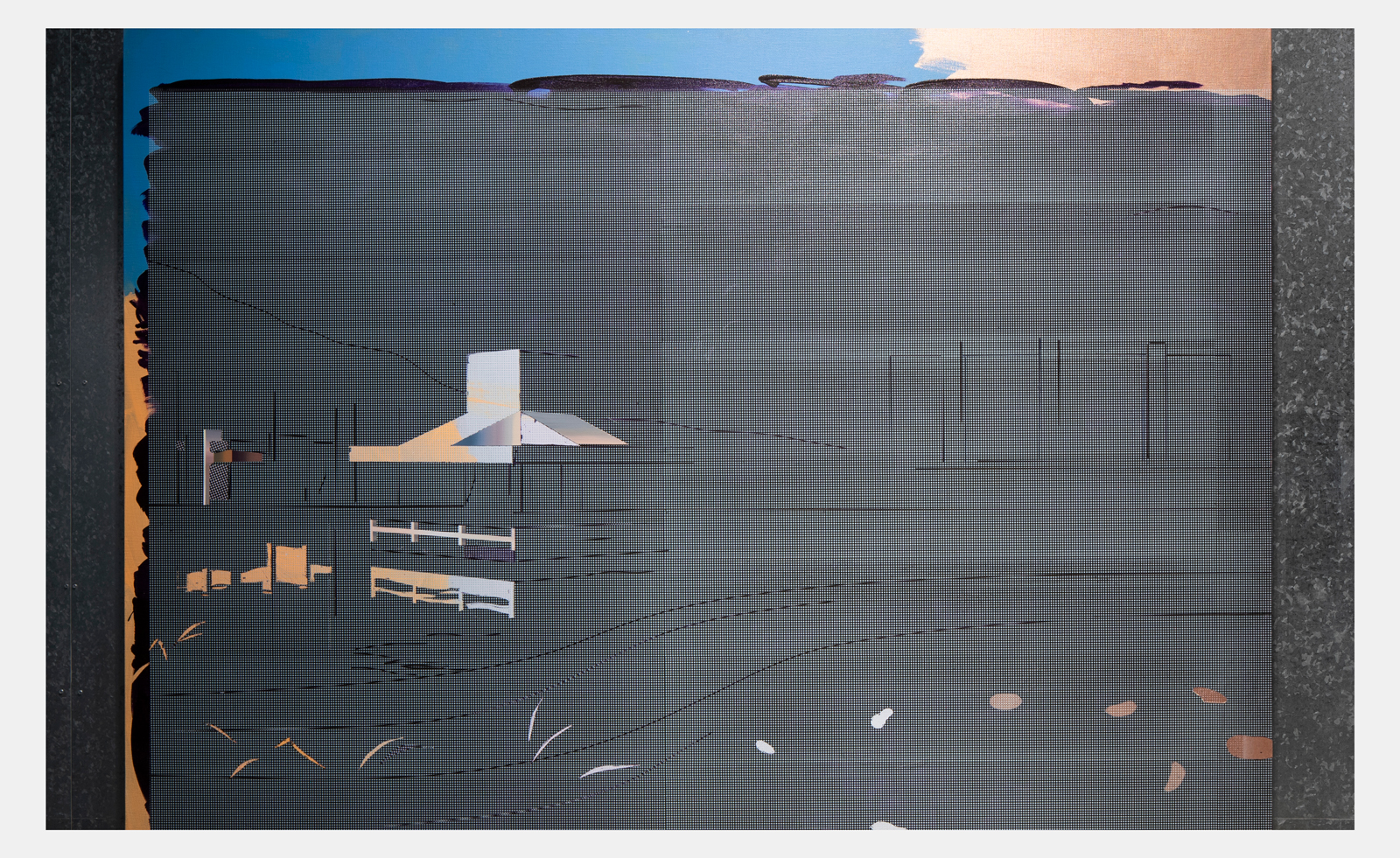 Cui Jie revisits past utopian architectures in her retro-futuristic cityscapes
Cui Jie revisits past utopian architectures in her retro-futuristic cityscapesCui Jie responds to the ‘Cosmos Cinema’ theme of the Shanghai Biennale 2023
-
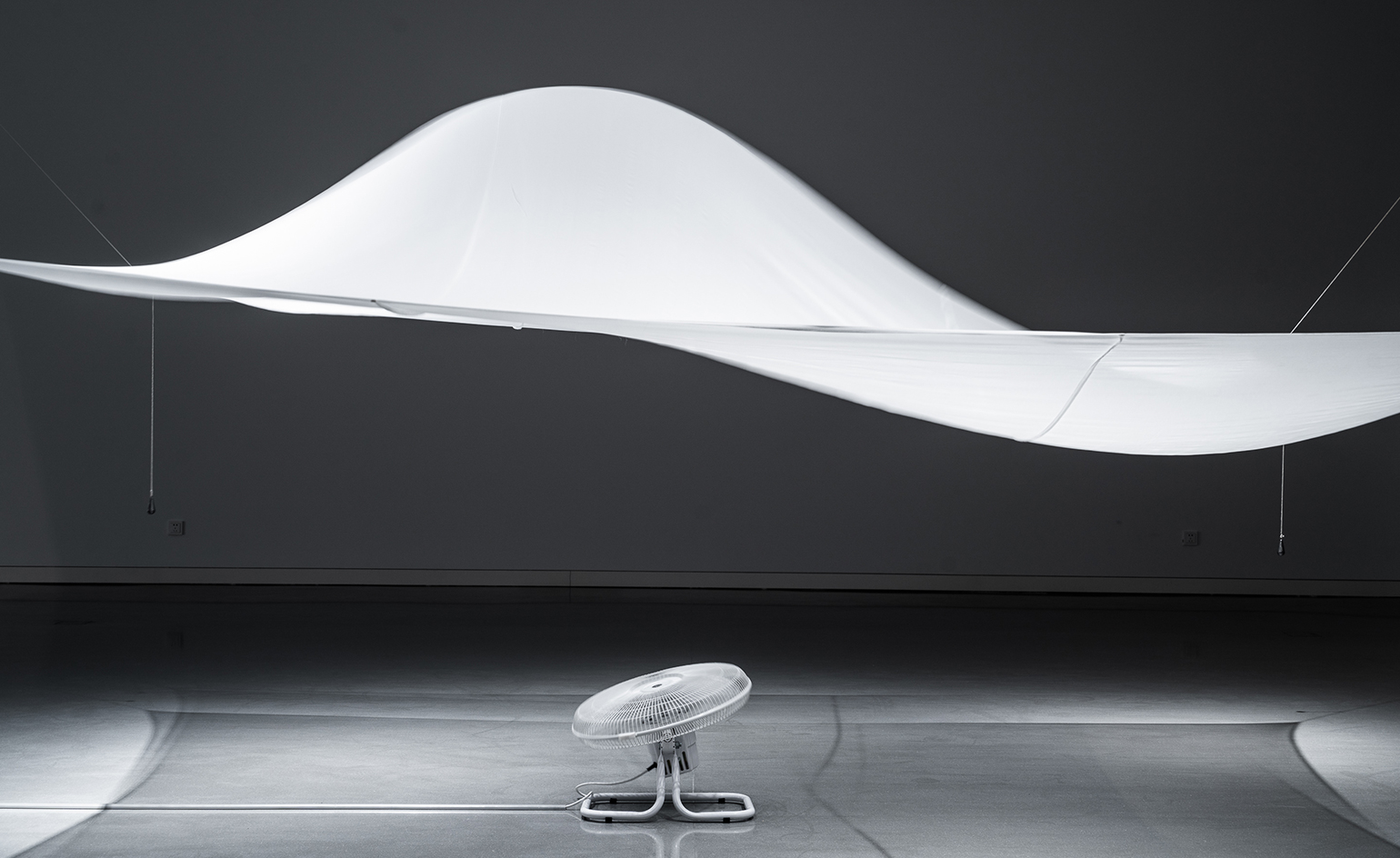 ‘A Show About Nothing’: group exhibition in Hangzhou celebrates emptiness
‘A Show About Nothing’: group exhibition in Hangzhou celebrates emptinessThe inaugural exhibition at new Hangzhou cultural centre By Art Matters explores ‘nothingness’ through 30 local and international artists, including Maurizio Cattelan, Ghislaine Leung, Hiroshi Sugimoto, Liu Guoqiang and Yoko Ono
-
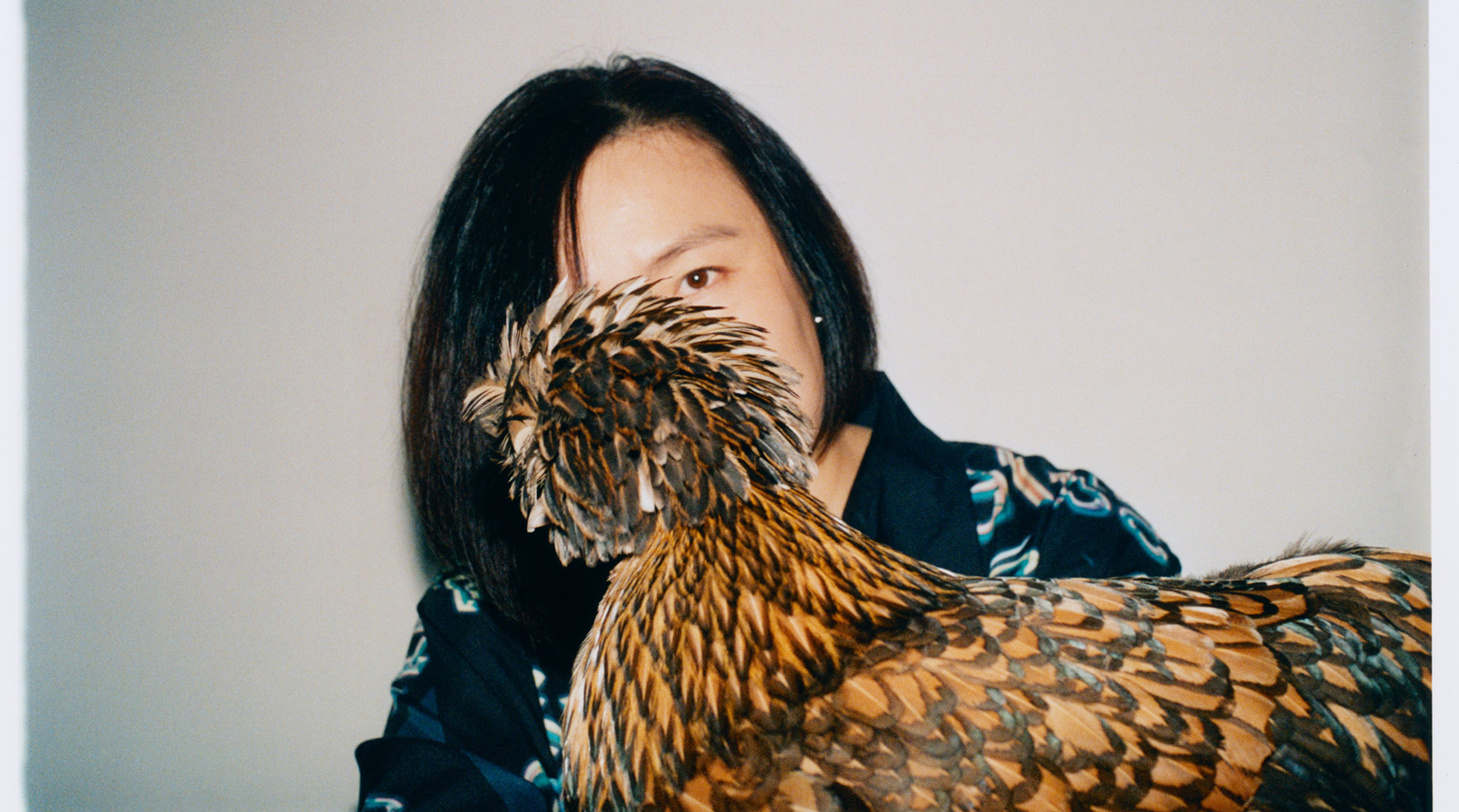 Cao Fei’s dystopian fantasies fuse art and technology
Cao Fei’s dystopian fantasies fuse art and technologyChinese artist Cao Fei’s dystopian art tackles themes such as the automation of labour, hyper-capitalism and the effect of a global pandemic. Having just completed her first major solo show in Beijing, the prolific winner of the 2021 Deutsche Börse Photography Foundation Prize is going global, with her retro-futuristic take on contemporary life now the subject of exhibitions from Los Angeles to Rome, and a 20-page portfolio for Wallpaper*
-
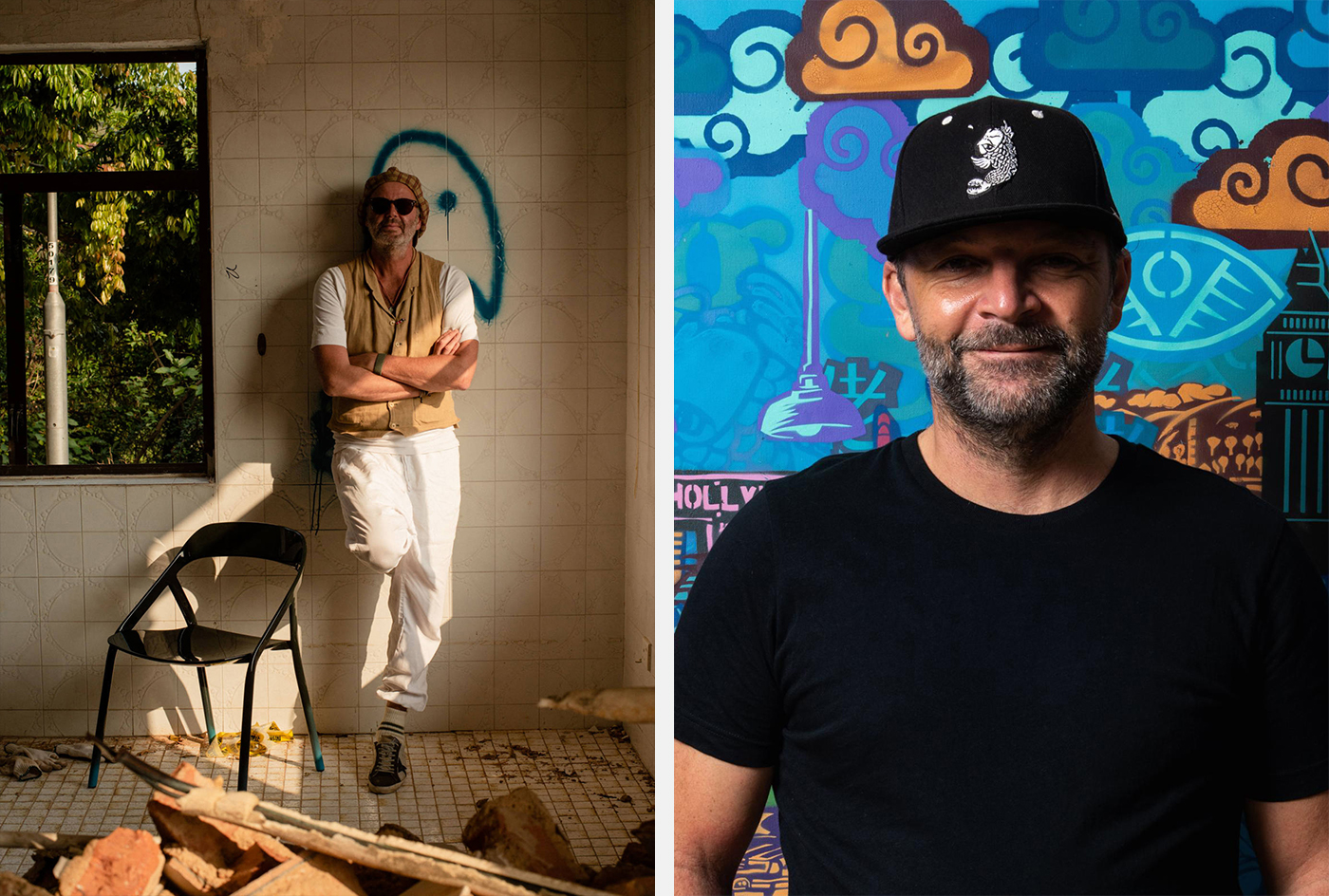 Hong Kong through artists’ eyes
Hong Kong through artists’ eyesHong Kong’s buzzing art and design scene, explored through the eyes of two creatives drawn to practise in the city
-
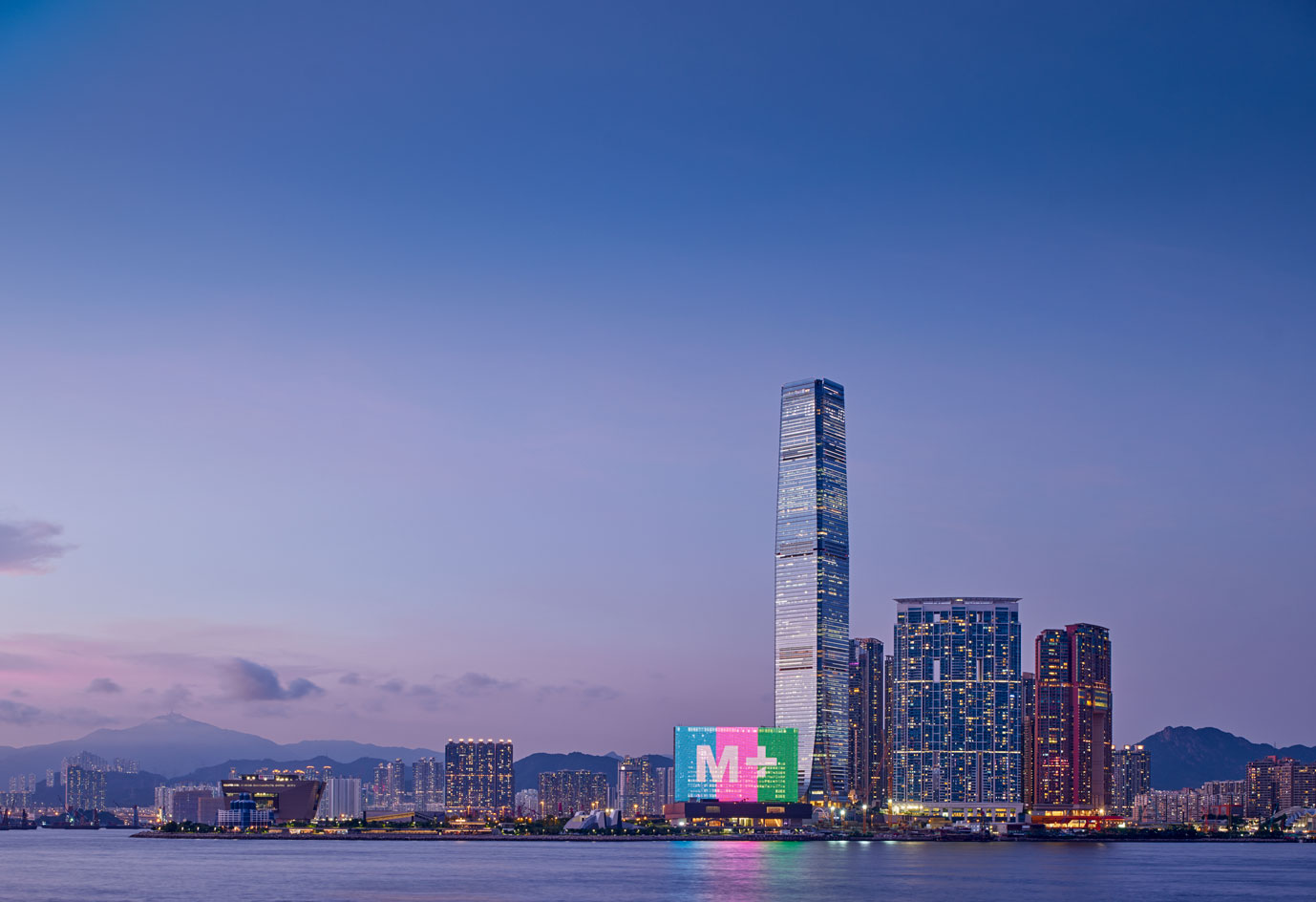 Hong Kong’s M+ Museum to open with six thematic shows
Hong Kong’s M+ Museum to open with six thematic showsAsia’s first global museum of contemporary visual culture will open on 12 November in Hong Kong’s West Kowloon Cultural District, with six themed shows spanning art, design and architecture
-
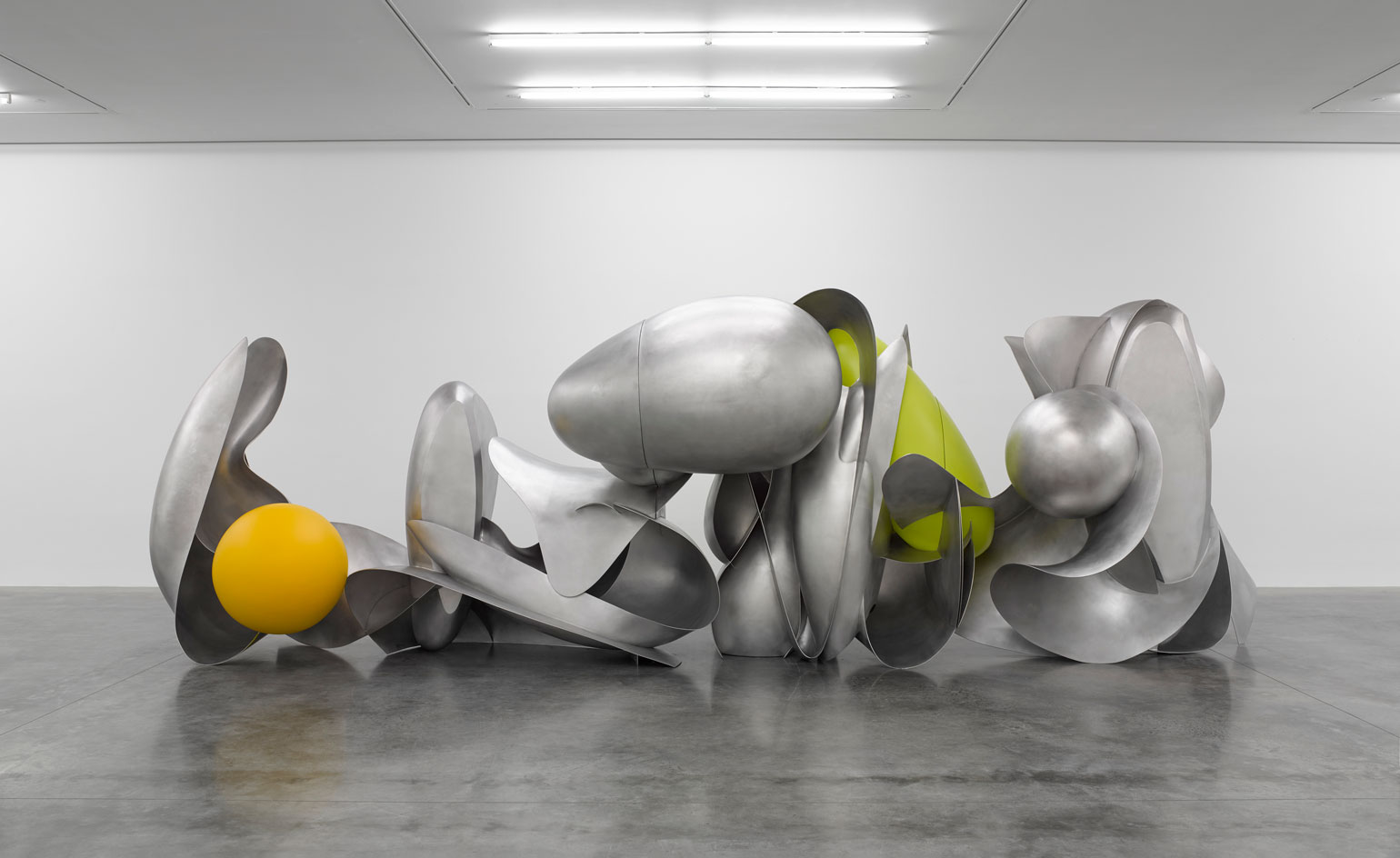 Architectural futurism and urban ‘nudity’: Liu Wei at White Cube
Architectural futurism and urban ‘nudity’: Liu Wei at White CubeWhat is urban space without bodies? Chinese artist Liu Wei describes his eerie exploration of deserted cityscapes at White Cube Bermondsey